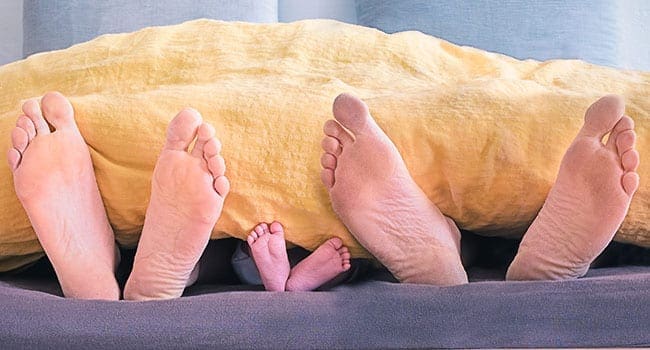 Two of your colleagues are talking in the hallway. You’d like to join the conversation, but you don’t know if you’ll be seen as a rude interruption or a welcome addition.
Two of your colleagues are talking in the hallway. You’d like to join the conversation, but you don’t know if you’ll be seen as a rude interruption or a welcome addition.
Want to find out? Just watch their feet.
When you approach the twosome, you will be acknowledged in one of two ways. If the feet of your two colleagues stay in place and they twist only their upper torsos in your direction, they don’t really want you to join the conversation. But if their feet open to include you then you know that you are truly invited to participate.
And that’s only one of the messages you can get from reading feet.
Here’s another example: Whenever you are speaking with a co-worker who seems to be paying attention, and whose upper body is angled toward you, but whose legs and feet have turned toward the door – realize that the conversation is over. Her feet are telling you she wants to leave.
Foot positions are revealing even if someone’s legs are crossed. If the toe of the leg that is crossed on top is pointing towards you, the person is most likely interested in you. If the opposite leg is crossed so the top toe is pointing away, the person is probably withdrawing.
Our feet and legs are not only our primary means of locomotion, they are in the forefront of reactions to “fight, flight, or freeze” survival strategies. The limbic brain is at the centre of our emotional response system. Its major function is to react instantaneously to incoming information from the environment. Emotional reactions, as we know, occur prior to thought. Before we’ve had time to develop any conscious plan, our limbic brain has already made sure that our feet and legs – depending on the situation – are geared to freeze in place, run away, or kick out in defense.
When people try to control their body language, they focus primarily on facial expressions and hand/arm gestures. That’s because rarely is anyone (even politicians, actors, or executives) coached in body language below the waist. And since gestures from the legs and feet are left unrehearsed, they are also where the truth can most often be found.
I witnessed an example of this at a conference once where I was a keynote speaker. Because my speech was scheduled for the next morning, I arrived a day early to view other presenters and to get a feel for the audience. One of the sessions I saw was an interview with the President and Chief Executive Officer of a financial institute. The interviewer (a member of the CEO’s staff) and interviewee were seated on stage in chairs facing the audience. The staff member read from a list of questions and the executive responded.
From a body language perspective it was fascinating. The executive’s facial expressions and hand gestures signaled comfort and confidence as he shared his philosophy of “relationship banking” and the importance of employees to his company’s brand.
Then came a series of questions about executive compensation. As the CEO responded to these inquiries, his expressions and gestures stayed constant but his “foot language” changed dramatically. From a comfortable, loose leg cross, the executive suddenly locked his ankles tightly together, pulled them back under his chair, and began to make tiny kicks with both feet. He then re-crossed his ankles and kicked his feet again. And this behaviour continued throughout the entire set of compensation questions.
Was the CEO comfortable addressing this issue? Well, his upper body would have you believe he was. And if that were all you could see (if, for instance, he had been sitting behind a desk or standing behind a lectern), you might have been convinced he was at ease. But his feet told an entirely different story – one of stress and anxiety.
Of course, our feet and legs react not only to stressors and threats, they respond to positive emotions as well. “Dancing for joy,” “Kicking up your heels,” “Walking on air,” and “Staying on your toes” are only some of the phrases used to acknowledge that positive connection.
Bouncing, tapping, wiggling feet are what professional poker players refer to as “happy feet.” In poker it’s a high-confidence tell, a signal that the player’s hand is strong.
I’ve noticed a similar signal in business negotiations. If you see a lot of high-energy foot jiggling (or if you notice a slight bounce in the shoulders that is a result of such movement) you can almost always assume that the party involved is feeling pretty good about his bargaining position. And if your seated opponent rocks back on his heels and raises his toes – he probably thinks he has the upper hand.
Feet even say a lot about your self-confidence. When you stand with your feet close together, you seem timid or hesitant. But when you widen your stance, you look more “solid” and sure of yourself.
Studies show that observers have greater success judging a person’s true emotional state when they can see the entire body. You may not know it, but instinctively you’ve been reacting to foot gestures all your life. Now you know a little more about what to look for.
Carol Kinsey Goman, PhD, is an executive coach, consultant, and international keynote speaker at corporate, government, and association events. She is also the author of STAND OUT: How to Build Your Leadership Presence.
The views, opinions and positions expressed by columnists and contributors are the author’s alone. They do not inherently or expressly reflect the views, opinions and/or positions of our publication.



Terrific article. I have never considered the lower hemisphere in reading body language.